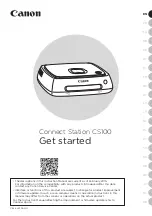
70
Barracuda 4LP Product Manual, Rev. D
Notes.
[1]
Positive Logic Enables Transmitter (+5 V = Asserted)
Negative Logic Enables Receivers (0 V = Asserted)
[2]
Negative Logic Signal (0 V = Asserted)
[3]
Total interface cable length should not exceed value given in Section 9.6.3.2 from first SCSI device at
beginning to end of daisy-chain. See Section 9.7.2 for signal characteristics.
[4]
I/O Line terminators. If SCSI device is a Seagate disc drive, terminators and a place to plug them in must
be provided external to the drive by user, systems integrator or host equipment manufacturer where
needed. The drive has no terminators and there are no provisions on the drive for terminator installation.
[5]
Arrangements for connecting terminator power to the terminators must be made by the systems designer.
As a help, drive +5 V power is made available on SCSI bus (“N,” “W,” and “WD” models) for powering
external terminators if the drive option select header jumper TP (Figure 7d) is installed in rightmost posi-
tion “TP.” See pin assignment Tables 13b and 13c for pins assigned to terminator power.
[6]
SCSI I/O line (pin 21) disables I/O) circuits if single-ended cable plugged in or cable plugged in upside
down.
[7]
SCSI I/O cable ground. See Tables 13b and Table 13e.
Figure 13.
Typical differential I/O line transmitter/receiver and external terminators
TE
RE
LSI
XCVR
1
1
R
2
+5V
+5V
5.6K
Transmit/Receive
Enable [1]
Transmit or
Receive
Signal [2]
[3]
Term
Power
[5]
330
Ohm
150
Ohm
330
Ohm
SCSI Device at Beginning of I/O Cable
(usually Host Adaptor/Initiator)
TE
RE
LSI
XCVR
1
1
R
2
+5V
+5V
5.6K
Transmit/Receive
Enable [1]
Transmit or
Receive
Signal [2]
Term
Power
[5]
330
Ohm
150
Ohm
330
Ohm
SCSI Device at End of I/O Cable
(Drive/Target)
[4]
Twisted or Flat
Cable Pair
[4]
DIFFSENS [6]
Disable
DIFFSENS [6]
Disable
[7]
[7]















































